- Introduction
- ES Morse
- Morse in New England
- Morse as an illustrator
- Morse in Japan
- Morse's pottery collection
- Charles Otis Whitman
- Shosaburo Watase
- Umeko Tsuda and Sutematsu Yamakawa
- Katsuma Dan
- Emperor Showa (Hirohito)
- Shinya Inoue
- Osamu Shimomura
- Susumu Honjo
- --------
- E.S. Morse Institute
- Institutional Cooperation
- Fukushima
- About
Katsuma Dan 1904 – 1996
Katsuma Dan was a Japanese embryologist and cell biologist who conducted research at MBL in 1931-34, 1936. In Japan, he and his wife Jean worked at the Misaki Marine Station outside Tokyo. A professor of biology at Tokyo Metropolitan University from 1949-1968, he served as its president from 1965 until 1972.
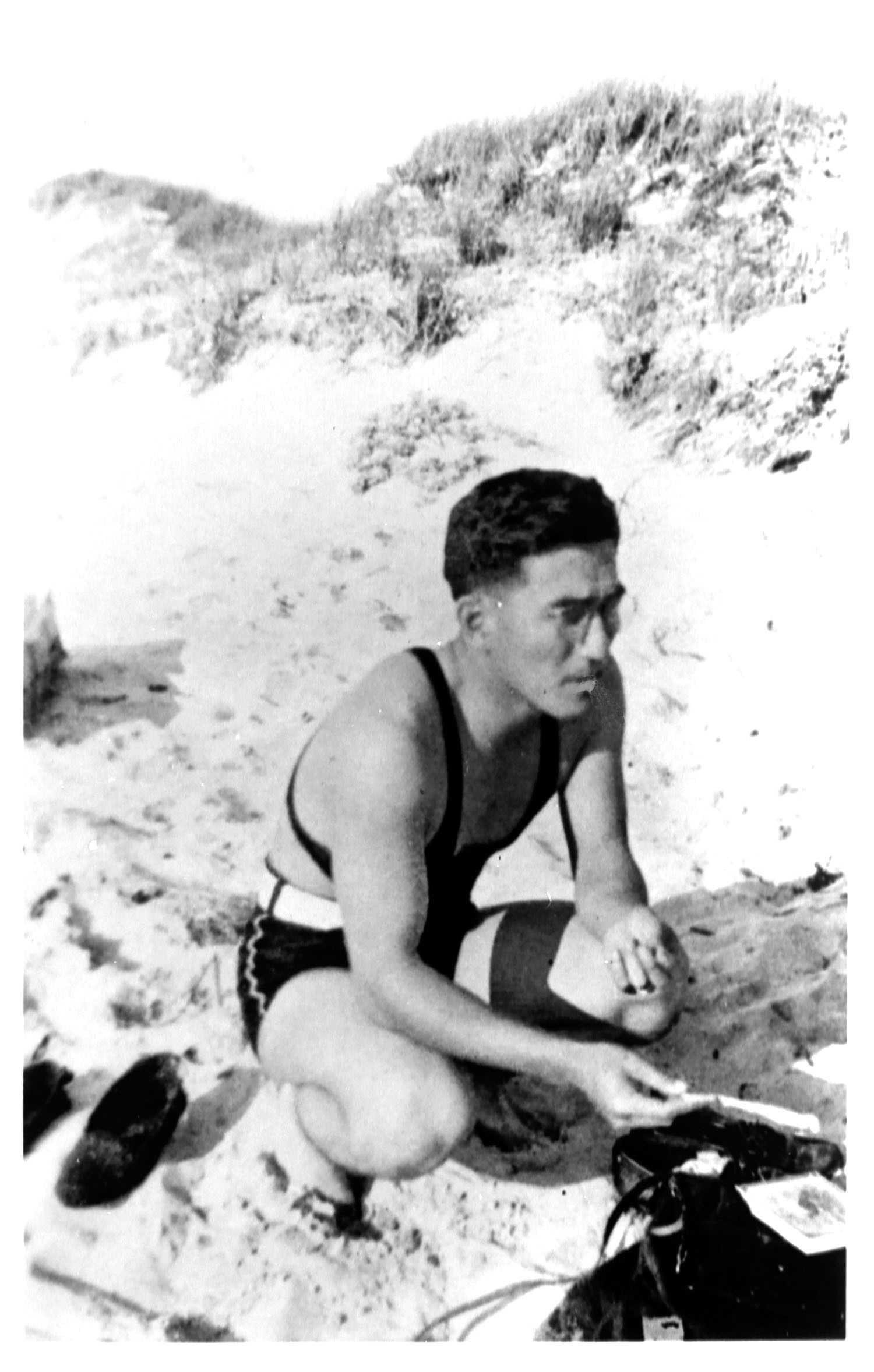
The young Katsuma Dan on the beach at the Misaki Marine Biological Station. Photo courtesy of Dr. Mariko Kondo, MMBS.
Katsuma Dan was born in 1904 in Tokyo, the youngest son of Baron Dan Takuma, president of the Mitsui Gomei Kaisha Corporation. Takuma was educated in the United States, in the early waves of students being sent out internationally during the Meiji era, graduating from Massachusetts Institute of Technology in 1878. He was one of the first foreign students to be educated at MIT and later, as president of the Japan Steel Works, he initiated and maintained close research ties with The Institute.
After receiving his undergraduate degree from the University of Tokyo in 1929, Katsuma also came to the United States where he studied embryology with Prof. L.V. Heilbrunn at the University of Pennsylvania, receiving a Ph.D. in 1934 . In addition Dan worked and studied at the Marine Biological Laboratory at Woods Hole (MBL) from 1931-1934, and later in 1936. His future wife (and longtime scientific collaborator) American Jean M. Clark was also a student of Heilbrunn's, studying fertilization in marine invertebrates. He and his wife used sea urchins to probe the mechanisms of cell division.
The couple raised five children. They also maintained lasting ties to the MBL and returned often in later years as summer researchers and lecturers in embryology and to visit friends. He became an MBL corporation member in 1936.
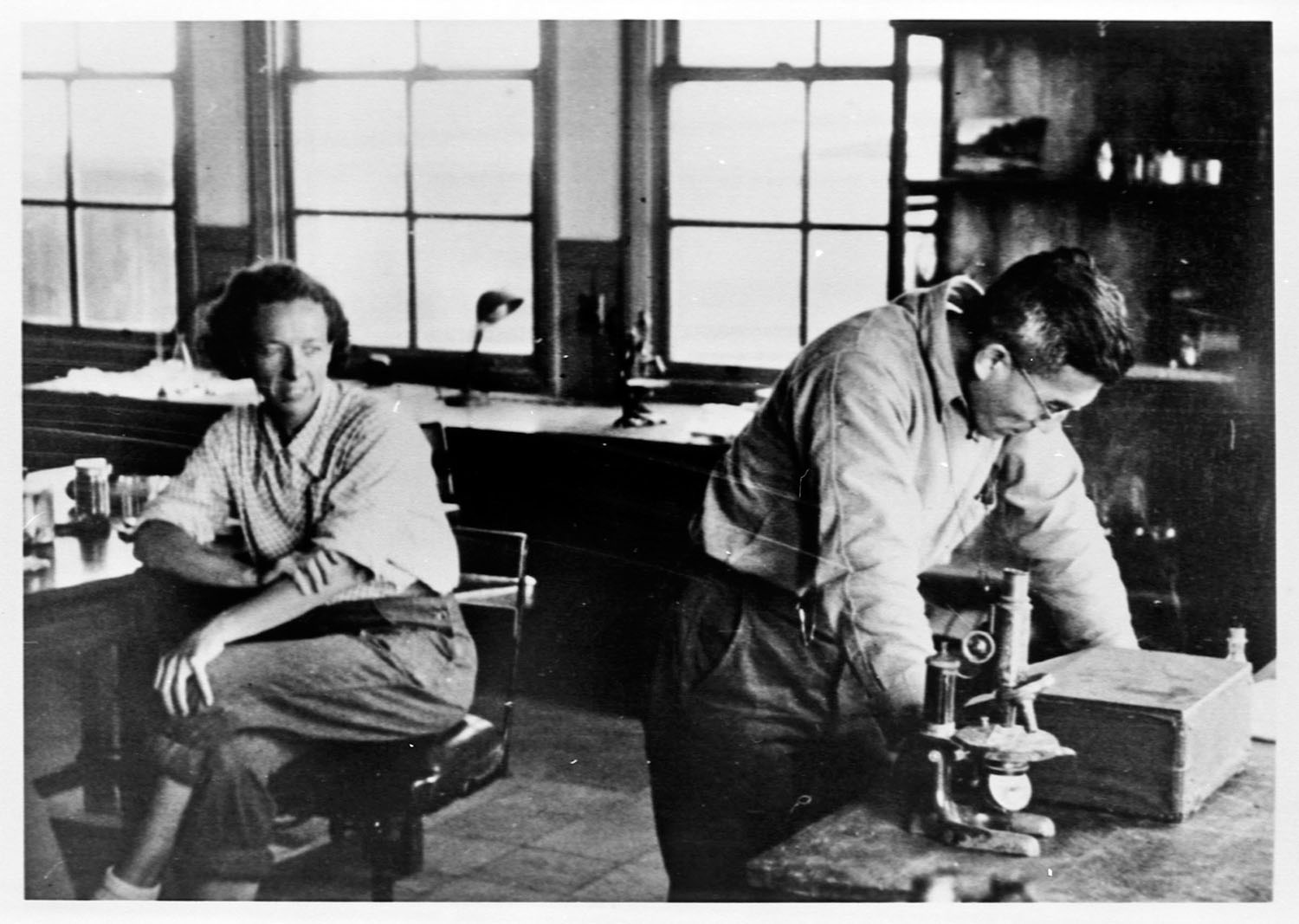
Jean Clark Dan and Katsuma Dan in their laboratory at the Misaki Marine Biological Station. Photo courtesy of Dr. Mariko Kondo, MMBS.
The Dan’s returned to Japan in the late 1930’s and worked at the Misaki Marine Biological Station. He and his students maintained a remarkable degree of scientific productivity during World War II. His spirit is reflected in a letter written after the war to a friend in the United States: “ducking under bombs was not so bad. Rather it was a great excitement. Hide and seek at the expense of your life can’t help being exciting. There was, however, an awful side to it too.”
Near the end of the war, the Japanese navy took over the Misaki Marine Station and converted it into a base for miniature submarines. Although displaced, Dan and his students set up a crude laboratory nearby and continued their work.
At the end of the war, Dan posted a hand-written note on the door of Misaki, addressed to advancing American forces, in which he said: “…you can destroy the weapons and the war instruments, but save the civil equipments for the Japanese students. When you are through with your job here, notify to the university and let us come back to our scientific home.” The note was signed, “The last one to go.” The obvious humanity and the mention of American marine biological laboratories appealed to a US Naval officer who passed the note on to the MBL. It was later published in Time Magazine.
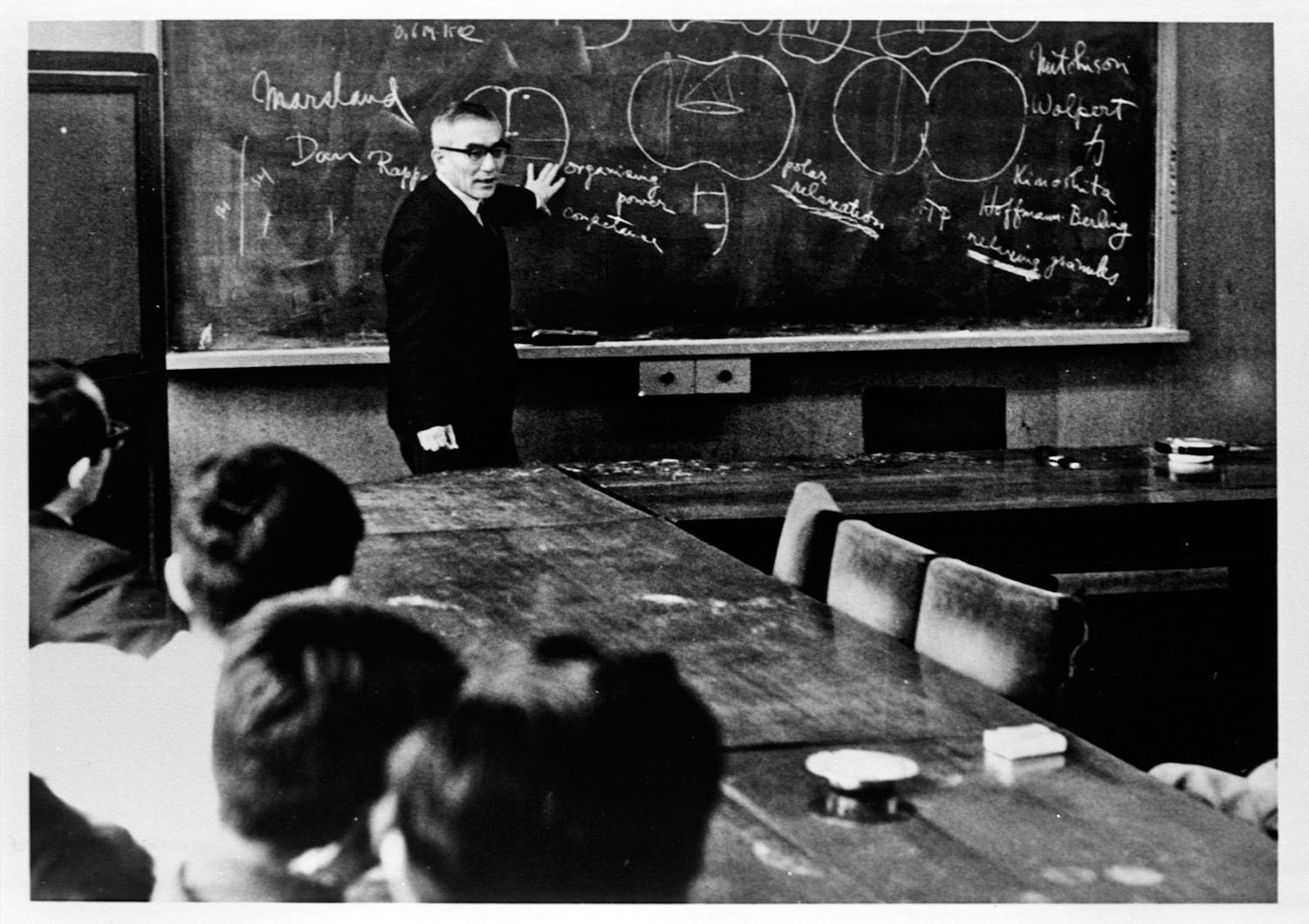
Dan's scientific work focused on using marine invertebrates as model organisms to study fundamental questions in cell biology and embryonic development. He and his students focused on direct observation of cell behavior using light microscopy and discovered many of the fundamental aspects of fertilization, development, and morphogenesis (e.g., Dan and Okazaki, 1956). To settle a long-standing debate over the existence of the mitotic spindle, he encouraged his student, Shinya Inoue, to construct polarized light microscopes and look for evidence of organized polymer networks in living cells.
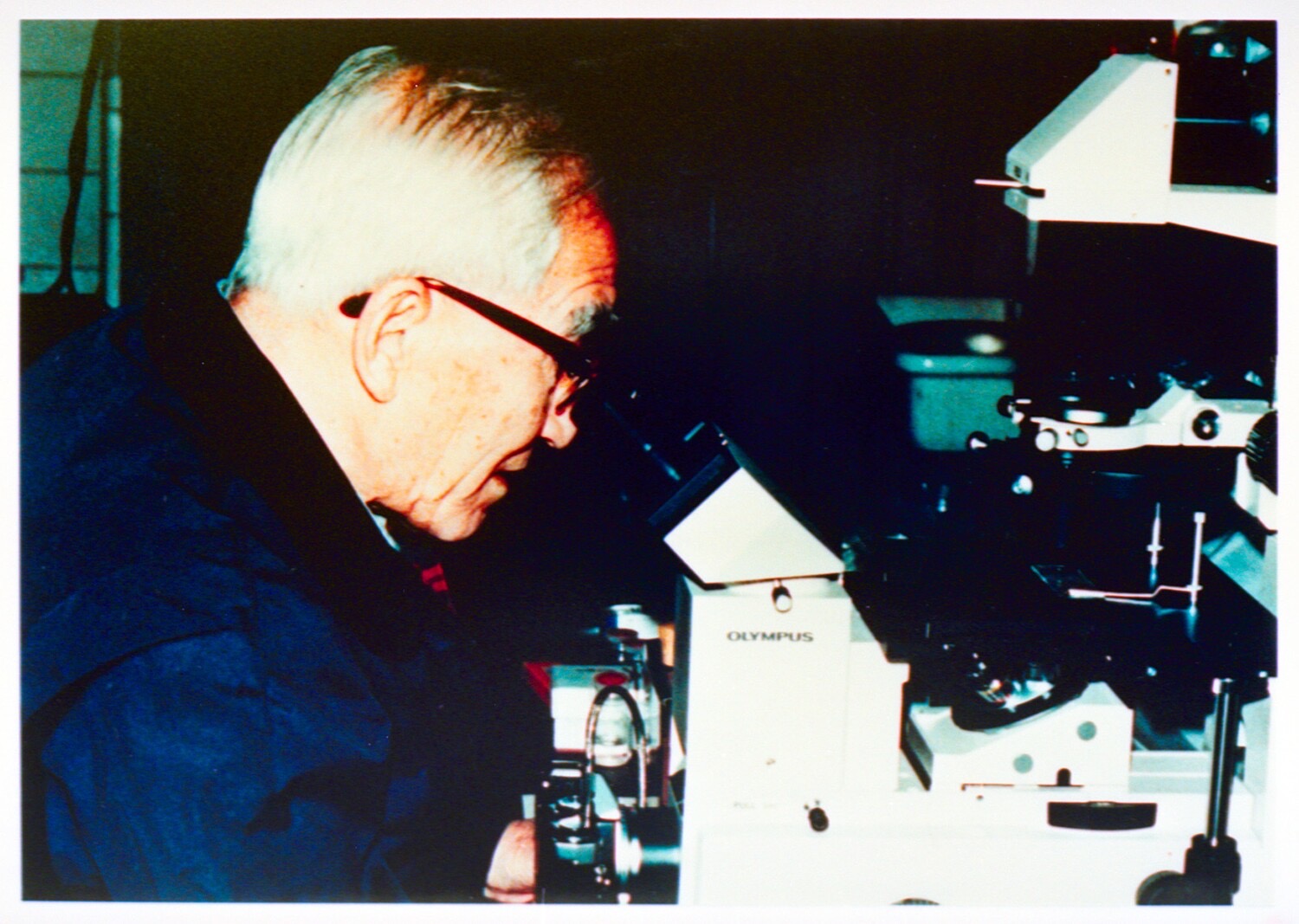
Dr. Katsuma Dan continuing his research at Misaki Marine Biological Station near the end of his tenure as president of Tokyo Metropolitan University. Photo courtesy of Dr. Mariko Kondo, MMBS.
Dan was credited with original studies of marine organisms, their cell division, fertilization, early development, cell differentiation and lunar-influenced spawning cycles. His measurements of the expansion and shrinkage of cell surfaces made possible the quantitative study of this ephemeral cell activity. Dan and his students also developed methods for measuring small, local movements of the cell surface during division. This enabled detailed, quantitative studies of the process of cell cleavage (cytokinesis).
In addition to being president of the Tokyo Metropolitan University, Katsuma Dan also served as president of both the Zoological Society of Japan and the Japanese Society of Developmental biologists. In 1976 he received the Second Order Imperial Medal, and in 1987 he received the Emperor's Award for Cultural Merit. A fellowship honoring Katsuma and Jean Dan was established in 1979 for cultural exchange between the United States and Japan.
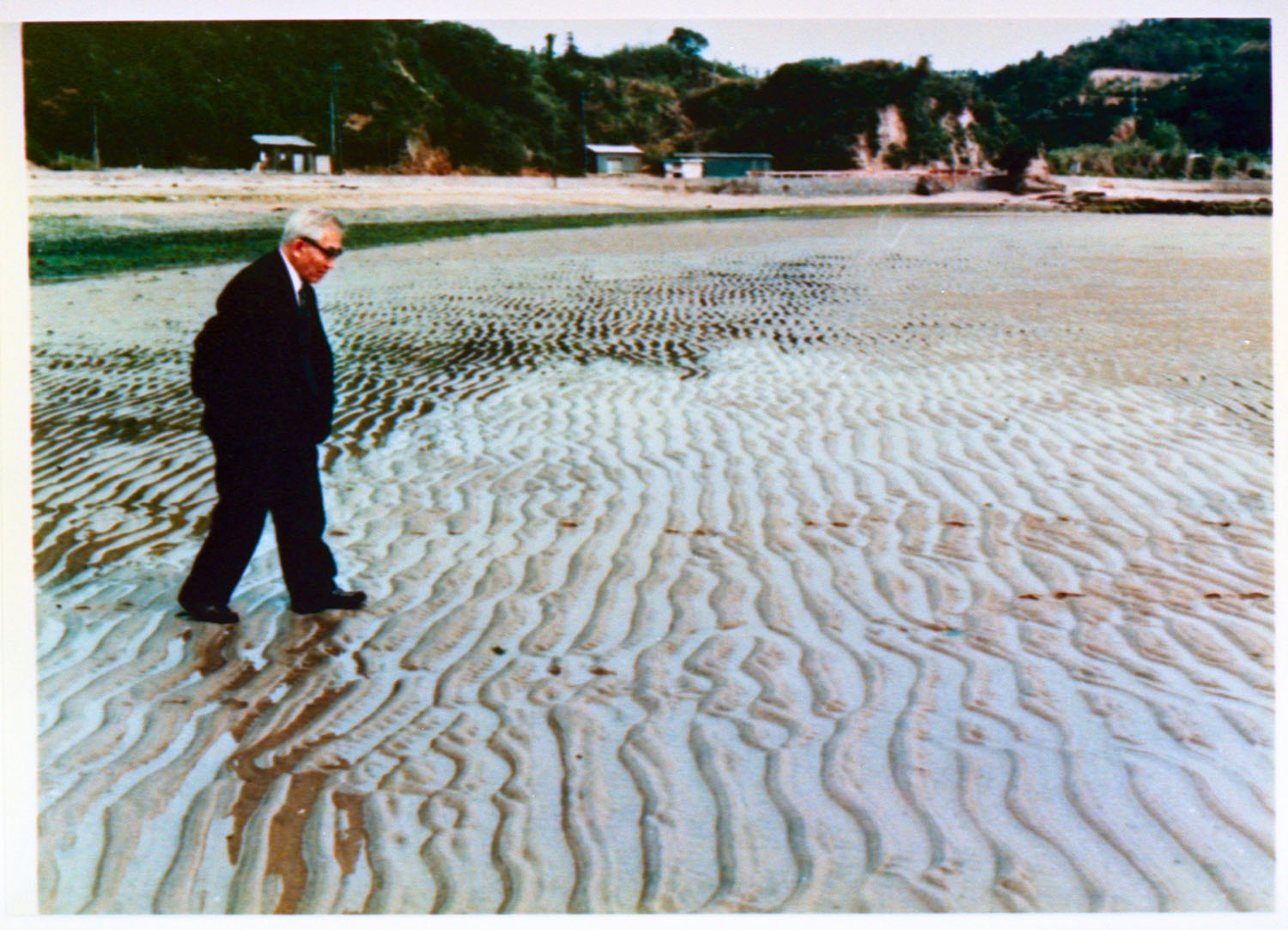
Dr. Katsuma Dan walking on the beach at Misaki Marine Biological Marine Station. Photo courtesy of Dr. Mariko Kondo, MMBS.
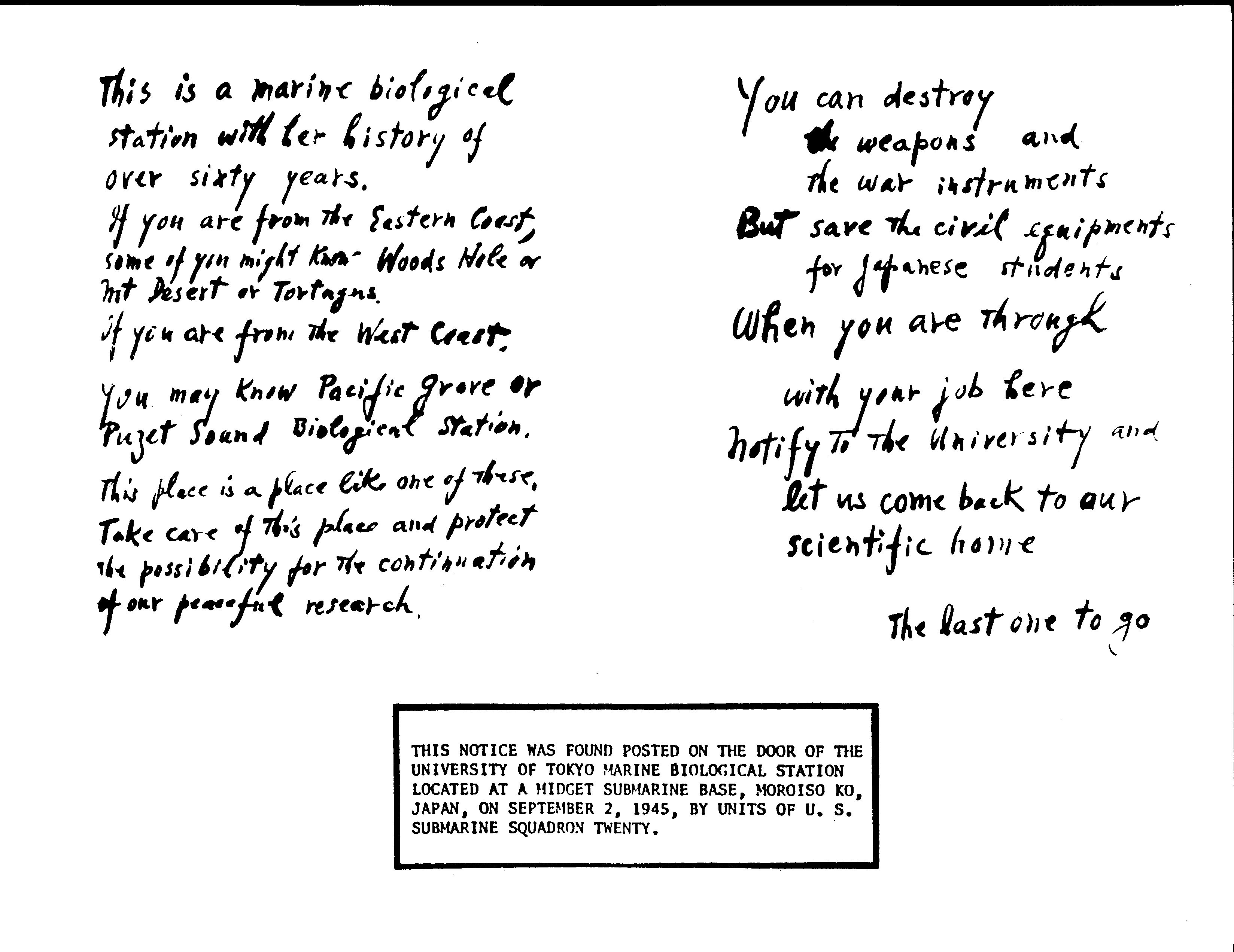
Large letter left on door of Misaki Marine Biological Station as American Navy took it over at the end of World War II. It is a plea for care of the marine lab, which was similar to American marine labs. Later it was discovered to have been written by Katsuma Dan. Now on display at MBL’s Library in the Lillie Building. Full story is in the Summer 2016 edition of our journal Spritsail. To read the Spritsail story, click here.

Sea Urchins, used by the Dans in their research in cell division.